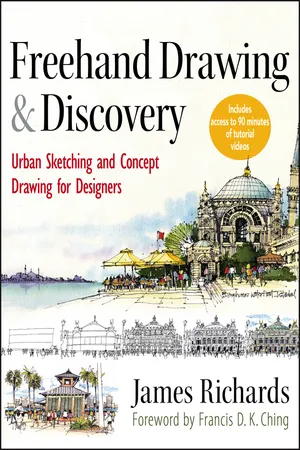
eBook - ePub
Freehand Drawing and Discovery
Urban Sketching and Concept Drawing for Designers
- English
- ePUB (mobile friendly)
- Available on iOS & Android
eBook - ePub
About this book
Features access to video tutorials!
Designed to help architects, planners, and landscape architects use freehand sketching to quickly and creatively generate design concepts, Freehand Drawing and Discovery uses an array of cross-disciplinary examples to help readers develop their drawing skills. Taking a "both/and" approach, this book provides step-by-step guidance on drawing tools and techniques and offers practical suggestions on how to use these skills in conjunction with digital tools on real-world projects. Illustrated with nearly 300 full color drawings, the book includes a series of video demonstrations that reinforces the sketching techniques.
Designed to help architects, planners, and landscape architects use freehand sketching to quickly and creatively generate design concepts, Freehand Drawing and Discovery uses an array of cross-disciplinary examples to help readers develop their drawing skills. Taking a "both/and" approach, this book provides step-by-step guidance on drawing tools and techniques and offers practical suggestions on how to use these skills in conjunction with digital tools on real-world projects. Illustrated with nearly 300 full color drawings, the book includes a series of video demonstrations that reinforces the sketching techniques.
Frequently asked questions
Yes, you can cancel anytime from the Subscription tab in your account settings on the Perlego website. Your subscription will stay active until the end of your current billing period. Learn how to cancel your subscription.
At the moment all of our mobile-responsive ePub books are available to download via the app. Most of our PDFs are also available to download and we're working on making the final remaining ones downloadable now. Learn more here.
Perlego offers two plans: Essential and Complete
- Essential is ideal for learners and professionals who enjoy exploring a wide range of subjects. Access the Essential Library with 800,000+ trusted titles and best-sellers across business, personal growth, and the humanities. Includes unlimited reading time and Standard Read Aloud voice.
- Complete: Perfect for advanced learners and researchers needing full, unrestricted access. Unlock 1.4M+ books across hundreds of subjects, including academic and specialized titles. The Complete Plan also includes advanced features like Premium Read Aloud and Research Assistant.
We are an online textbook subscription service, where you can get access to an entire online library for less than the price of a single book per month. With over 1 million books across 1000+ topics, we’ve got you covered! Learn more here.
Look out for the read-aloud symbol on your next book to see if you can listen to it. The read-aloud tool reads text aloud for you, highlighting the text as it is being read. You can pause it, speed it up and slow it down. Learn more here.
Yes! You can use the Perlego app on both iOS or Android devices to read anytime, anywhere — even offline. Perfect for commutes or when you’re on the go.
Please note we cannot support devices running on iOS 13 and Android 7 or earlier. Learn more about using the app.
Please note we cannot support devices running on iOS 13 and Android 7 or earlier. Learn more about using the app.
Yes, you can access Freehand Drawing and Discovery by James Richards in PDF and/or ePUB format, as well as other popular books in Architecture & Architecture Design. We have over one million books available in our catalogue for you to explore.
Information
Part 1
Learning a Language
start figureThis waterfront scene achieves an illusion of depth through one-point perspective and creation of a foreground, middle ground, and background. Loose line quality, color, and people in motion add life and energy to the sketch.

Chapter One
The Freehand Renaissance
start figureFigure 1.1: The author’s annotated sketch highlights key planning and design attributes of an urban village.

Figure 1.2: A striking on-the-spot sketch from Rome by urban sketcher and illustrator Benedetta Dossi.
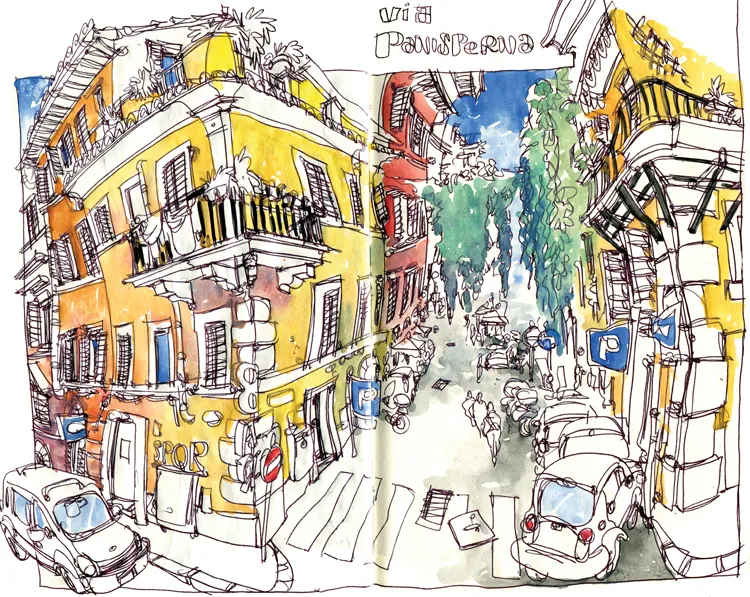
Something’s happening here. Concurrent with the rise of stunning digital technology and computer imagery, online groups dedicated to freehand sketching are proliferating at a startling pace.
start figure Figure 1.3: Architect and urban sketcher Asnee Tasna’s on-the-spot sketch of Bangkok’s Ratchaprasong junction, sketched from the comfort of a posh restaurant where he was spared from the heat and traffic.
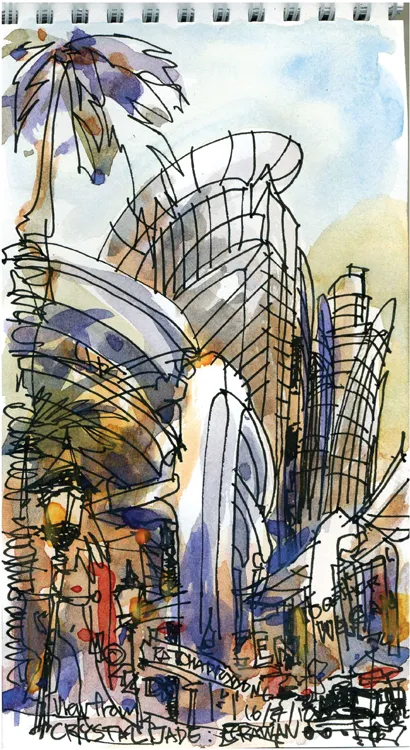
Attendance in hand-drawing classes, declining in recent years, is surging. Creative compositions blending lively hand drawings with digital imagery crop up all around us in retail interiors, print ads, book jackets for bestsellers, and website design. On-site design charrettes requiring quick sketching of rapidly evolving ideas have become the norm in town planning practice, and the rapid freehand storyboarding techniques of filmmaking are finding their way into the creative processes of cutting-edge architects and urban designers. The 2003 MOMA exhibition “Drawing Now: Eight Propositions” argued for “the renewed importance of drawing in the discourse of recent contemporary art,” marking a moment “when drawing has become a primary mode of expression for the most inventive and influential artists of the time.”
start feature We are witnessing a pendulum swing from oversaturation with digital imagery to a newfound appreciation for the immediacy and freshness of hand drawing and the emotional response it triggers.
The ubiquitous digitalization of commerce and communications has resulted in a yearning for the authentic and the handmade, as the culture seeks to reconnect to some essential aspects of human endeavor. Consequently, the world is rediscovering the magic and power of the hand-drawn line, both as a uniquely human form of expression and as a catalyst for creative thinking. We are witnessing a pendulum swing from oversaturation with digital imagery to a newfound appreciation for the immediacy and freshness of hand drawing and the emotional response it triggers. The Freehand Renaissance is upon us.
start figure Figure 1.4: Stage designer and urban sketcher Paul Wang’s capture of the lavish blend of classical elements with Chinese symbolism in a shophouse at Purvis Street, Singapore.
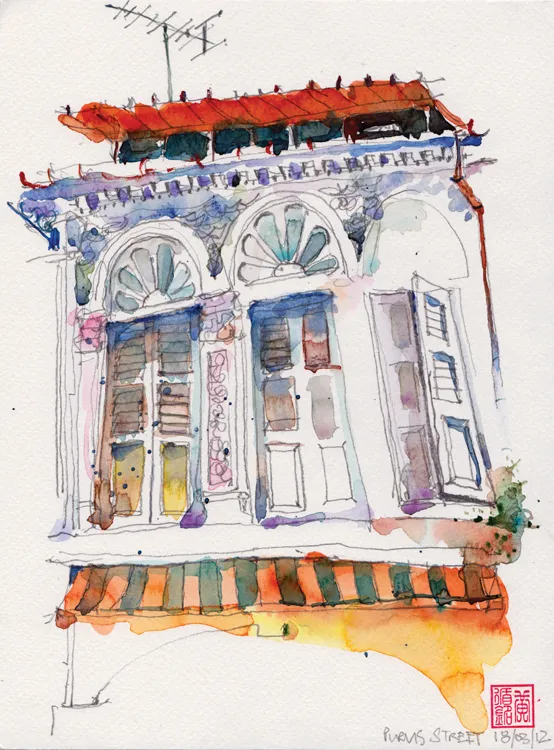
Figure 1.5: Collages of hand-drawn line, paint, and cut paper by artist John Lavin are featured as murals in Starbucks stores all over the world.
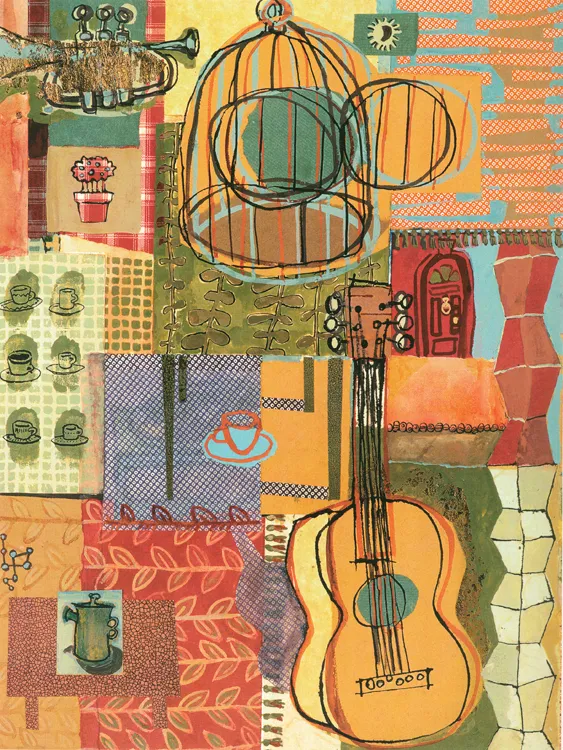
Yet, at this writing, the state of drawing in design schools is ambiguous at best. I’ve spent a good deal of the past few years responding to invitations to speak about drawing or to teach sketching workshops at conferences and universities. Most often the audience is composed of people who, for the most part, don’t draw. Others used to draw and—for a variety of reasons—don’t draw anymore. And they sense something missing—they are hungry to reconnect with their creativity at a very tactile level with mind, eye, and hand.
Others are students or young professionals who, regardless of any innate talent they may have demonstrated, have been trained to believe that drawing is not only passé, but regressive—it will hold them back from the brave new world of evolving digital technologies. For them, drawing has been misrepresented and misunderstood, sadly, like the way of the Jedi in Star Wars: an old and useless religion; the way of the sorcerer. Like the Jedi’s ancient but elegant light saber, the sketcher’s tools have been cast as nostalgic and quaint—“give me a good blaster any day!”
Perhaps they have a point. Why draw? In a world of slick digital imagery, stunning animations, and virtual reality, is hand drawing still relevant? A generation of new graduates and young professionals is wading into increasingly complex projects without the drawing and sketching skills that have sustained designers for millennia; many say they see no need for them.
start figure Figure 1.6: The beautiful hand-drawn books of Sabrina Ward Harrison, essentially journals of free-flowing creativity, have developed a world-wide following in part because the handmade has become exotic to us.

At the same time, six-figure executives from Nike, IBM, and Microsoft are lining up to learn freehand drawing skills in seminars like Michael Gelb’s “How to Think Like Leonardo da Vinci.” Dan Roam’s “The Back of the Napkin” has become a bestselling business book, leading the way for a surge of articles and seminars espous...
Table of contents
- Foreword
- Part 1: Learning a Language
- Part 2: Urban Sketching
- Part 3: Concept Sketching
- Index